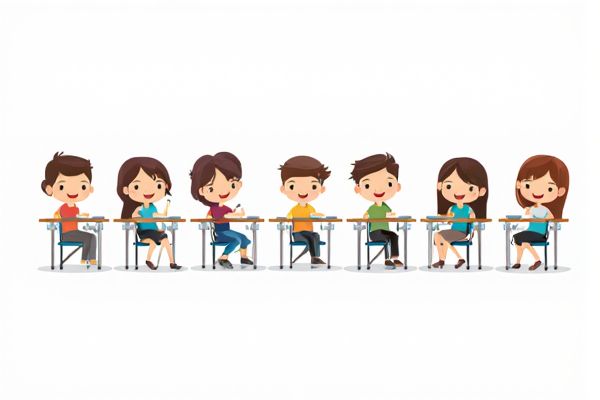
Create diverse and balanced groups instantly with this online random group generator tool, designed specifically for classroom use. Enhance student collaboration and engagement by effortlessly mixing group members in just a few clicks. Save time on organization and focus more on interactive learning experiences.
Online tool for random group generator classroom
We have prepared several samples of a random group generator for classroom use that are ready to use and easy to randomize. You can enter your own list as well. With just one click, you will get a randomized list and a single value for use.Data Source
Single Result
Multiple Results
Introduction to Random Group Generators for Classrooms
Random group generators for classrooms efficiently create balanced student groups by using algorithms that consider factors like skill levels and diversity. These tools enhance collaborative learning by ensuring fair and varied group compositions, which boosts student engagement and participation. Implementing random group generators saves teachers time on sorting tasks and promotes dynamic classroom interactions.
Benefits of Using Random Group Generators in Education
Random group generators in classrooms enhance collaborative learning by ensuring diverse student pairings that reduce bias and promote inclusivity. These tools save educators time by quickly forming balanced groups that maximize participation and engagement among students. Using random group generators also fosters critical social skills and increases interaction, which can lead to improved academic performance and a supportive learning environment.
Popular Random Group Generator Tools for Teachers
Popular random group generator tools for teachers include platforms like Quick Group Maker, Random Team Generator, and Group Maker Tool, which streamline the process of creating balanced student groups for collaborative classroom activities. These tools often feature customizable options such as group size, skill level balancing, and student names input, enhancing fairness and engagement. Utilizing these generators saves educators time while fostering diverse and effective group dynamics crucial for interactive learning environments.
Enhancing Student Engagement with Group Randomization
Random group generators in the classroom significantly enhance student engagement by promoting diverse collaboration and reducing bias in group formation. These tools encourage active participation and foster a dynamic learning environment by mixing students with varied skills and perspectives. Utilizing random groupization boosts interaction, critical thinking, and peer learning, resulting in improved academic outcomes.
Addressing Bias and Fairness in Group Assignments
Random group generators for classrooms help minimize bias by ensuring impartial student selection, promoting diversity and equity in group assignments. These tools utilize algorithms designed to distribute students evenly based on various attributes, such as skill levels, backgrounds, and learning preferences. Employing random group generators fosters fairness, enhances collaborative learning, and reduces the influence of teacher or peer favoritism in classroom dynamics.
Customization Options for Classroom Group Generators
Classroom group generators offer extensive customization options, allowing educators to assign students based on specific criteria such as skill level, learning style, or project requirements. Features often include the ability to set group sizes, include or exclude certain students, and shuffle members to ensure balanced participation. These tools enhance classroom dynamics by fostering equitable collaboration and tailored learning experiences.
Integrating Technology in Collaborative Learning
Random group generators streamline the process of forming diverse student teams, enhancing collaboration and engagement in classroom activities. Integrating technology such as online random group generators supports differentiated learning by ensuring balanced skill distribution and promoting peer interaction. This approach fosters active participation and improves learning outcomes through collaborative problem-solving and knowledge sharing.
Best Practices for Implementing Group Generators
Implementing a random group generator in the classroom requires clear criteria for group size and diversity to enhance collaboration and learning outcomes. Utilizing tools with customizable settings ensures balanced distribution of student abilities, interests, and participation levels. Regularly updating group compositions based on ongoing performance data fosters equitable engagement and maximizes peer interaction.
Overcoming Common Challenges in Group Formation
Random group generators for classrooms streamline the process of dividing students, minimizing biases and promoting diverse collaboration. They address challenges such as ensuring balanced skill levels and preventing repeated pairings, which enhances fairness and inclusivity. Integrating adaptive algorithms in these tools further optimizes group dynamics by considering individual strengths and learning preferences.
Evaluating the Impact on Student Collaboration and Performance
Random group generators in classrooms enhance student collaboration by promoting diverse interactions and reducing social biases, fostering an inclusive learning environment. Studies indicate that heterogeneous group assignments improve critical thinking and problem-solving skills, directly impacting overall student performance. Implementing technology-based random group tools streamlines group formation, enabling educators to focus on monitoring collaborative dynamics and academic outcomes.
 azrandom.com
azrandom.com